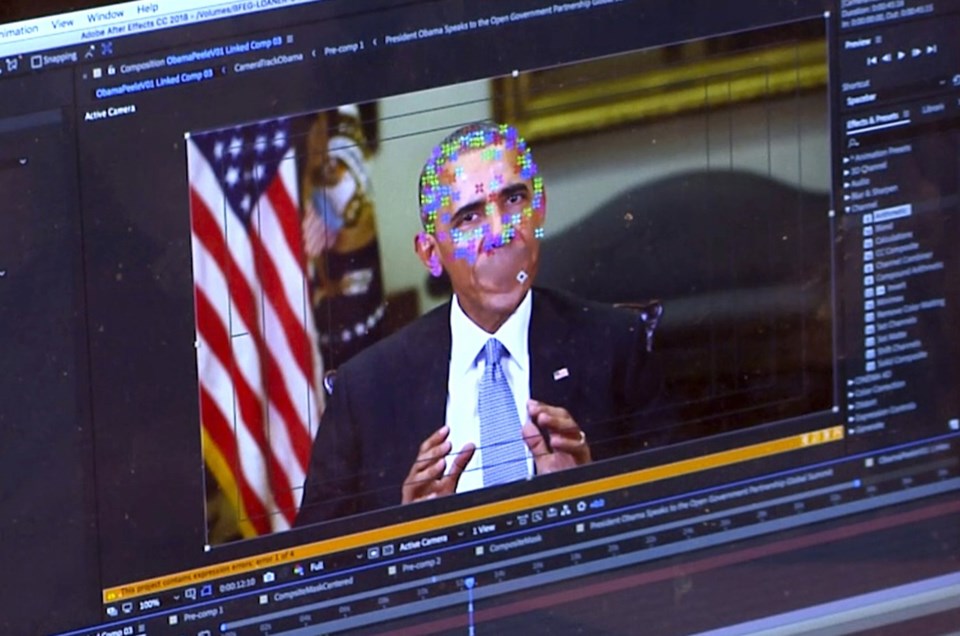TORONTO — Most Canadians have spotted deepfakes online and almost a quarter encounter them weekly, a new study says.
The research released this week by the Dais, a public policy organization at Toronto Metropolitan University, said 60 per cent of people in the country have seen deepfakes.
Deepfakes are digitally manipulated images or videos depicting scenes that have not happened.
Some of the most circulated examples include images falsely depicting Pope Francis in a Balenciaga puffer jacket and others purporting to show pop star Taylor Swift in sexually explicit poses. However, Prime Minister Justin Trudeau, TV chef Mary Berg and singer Michael Bublé have all been victimized by deepfakes.
The Dais' research found about 23 per cent of the 2,501 Canadians it had Pollara Strategic Insights survey in April came across deepfakes at least a few times every week.
How often and how many people encountered deep fakes is likely even higher than the study reported, said Sam Andrey, managing director of the Dais.
"People's recall of how often they're seeing deepfakes is imperfect and it's fair to say that for lots of people, these are very realistic images or media, and they may not realize that they're that they're seeing is artificial intelligence-generated imagery."
The younger people are, the more likely they are to report encountering deepfakes. The study found 74 per cent of those surveyed under the age of 30 said they have seen a deepfake, while 31 per cent reported such sightings multiple times per week. Just shy of 50 per cent of those over age 60 and 17 per cent of people even older said they saw deepfakes weekly.
The most common deepfakes involve images or videos of celebrities, followed closely by those related to politics.
Most of them are spotted on social media platforms Facebook, YouTube, X, and TikTok along with artificial intelligence chatbot ChatGPT, where researchers said people were more at risk of being exposed to deepfakes.
Their frequent appearance on such platforms and the realism some deepfakes carry is cause for concern because it makes people doubt the credibility of trustworthy information even more than they used to, Andrey said.
"Dis- and misinformation is as old as time, but there was something about...seeing the video, seeing the image that was at least something we could hold on to as a way to verify truth," he said.
"The fact that is now not even available to us anymore is making people uncomfortable and seeking out solutions."
Last year, Meta Platforms Inc. started banning links to Canadian news sites on its Instagram and Facebook platforms after Ottawa passed the Online News Act, which forced the tech giant to compensate media companies for content posted on their platforms.
Forty-one per cent of the survey's respondents said Meta blocking Canadian news as a result of the act has had a negative impact on their ability to stay current with the news, including 15 per cent who say it has had a very negative impact.
Meta spokesperson David Troya-Alvarez said in an email that the company would not be commenting on the report.
Some 32 per cent of respondents said they see information about news or current events that they immediately suspect to be false weekly, while 23 per cent spot it several times a month and 20 per cent view it a few times a year, little changed across the Dais' last three annual surveys on the topic.
Also seeing little change was the number of Canadians who reported being exposed to information about news or current events they immediately suspected to be true but later find out is false. Seventeen per cent of respondents reported having this experience weekly, 21 per cent said they saw it monthly and 29 per cent have encountered it on a yearly basis.
The lack of change in the numbers "reinforces that this has been bad for a while and it's not getting better," Andrey said.
"I don't take a lot of comfort from it, but I guess it is a small silver lining that it doesn't appear to be getting dramatically worse, at least in people's perceptions of it," he said.
This report by The Canadian Press was first published Aug. 20, 2024.
Tara Deschamps, The Canadian Press

